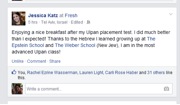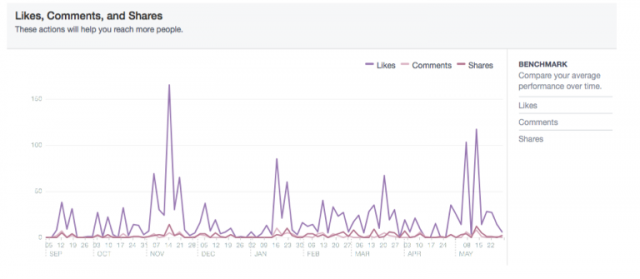Editor's note: The Jewish Day School Social Media Academy was a year long program to support schools in developing social media skills and applying them to various areas of their work. The social fundraising project encouraged schools to launch social campaigns to raise funds which would be matched by the AVI CHAI Foundation. Schools designed unique and varied campaigns, from honoring teachers to celebrating sports to raising scholarship funds. In this post, we hear from Krieger Schechter Day School as they share important lessons about the design and implementation of their campaign.
Krieger Schechter Day School (KSDS) decided to create a social media campaign to both raise funds and help alumni and alumni parents reconnect with the school. We chose to highlight our Grade 8 play performed all in Hebrew. We know our alumni and their families look back fondly on their performances, the late night practices, and the shared memories this experience built. During this campaign, we asked our alumni and their families to give back to KSDS and contribute to the current Grade 8 production, “Beauty and the Beast.” For the 20 days prior to the play we were showing one clip from each of the 20 previous plays.
We used the matching funds as a tool to motivate this group of alumni and alumni parents to give. Immediately, we found resistance from not only alumni parents but faculty as well. We did not have buy-in from our community at large. There were questions about why we need to support the play, although our research has shown people are more inclined to give towards a specific project rather than towards an unrestricted campaign. We realized that this specific group really needed to have a clear conversation explaining the goals of this social media experiment and campaign and we did not have that conversation prior to its launch.
The social media component was successful to get people to watch the clips of the plays. We grew our Facebook page, and there were even conversations that began organically. But, we came to two conclusions-one about the social media component and the other about the fundraising component. The first is that we did have to personally encourage people to post on our page. The initial posts or questions were from the staff whose job it was to post or a person that the staff member asked to post. The posts were not spontaneous. The second was that the larger gifts we received were from individuals who were personally asked or who knew more in depth about the project. After a conversation, people were more willing to support this campaign. Because of these two points, although we hit our fundraising goal, we do not feel we were successful overall.
It goes back to the grassroots of spreading the word. We are not a national organization like the Red Cross or a politician running for office like President Obama. We are a small Jewish day school in Baltimore. We are only going to attract from our small pool and some outside community members who believe in the value of egalitarian Jewish day school education. Otherwise, a play in Hebrew, or the KSDS annual campaign, is not something people will donate to.
The Jewish Day School Social Media Academy is an intensive program designed to help Jewish Day Schools advance their strategic use of social media in areas such as communication, marketing, community building, alumni relations and development. The 2013-14 nationwide cohort of 15 schools was generously supported by The AVI CHAI Foundation. Each of the schools will be sharing insights from their experience through blog posts here with the tag #jdsacademy
Complete the Social Media Self Assessment for your school at http://www.dayschoolacademy.org/assessment









 Given the power of online videos, we inaugurated LBTV Action News as a vehicle for telling the school’s story. In 60 to 90 second installments, students did standup spot “news reports,” on selected events and subjects. It was effective in terms of growing our social media reach. Parents are our main audience on Facebook – which is our main social medium — and they love seeing children doing the presenting as well as being the subjects of a video. It lent an additional appeal, as opposed to watching the expected administrator or teacher talking head tell about the school. And they were eager to share the Facebook postings, as well. Some of our most shared and far-reaching videos on Facebook were LBTV Action News items.
Given the power of online videos, we inaugurated LBTV Action News as a vehicle for telling the school’s story. In 60 to 90 second installments, students did standup spot “news reports,” on selected events and subjects. It was effective in terms of growing our social media reach. Parents are our main audience on Facebook – which is our main social medium — and they love seeing children doing the presenting as well as being the subjects of a video. It lent an additional appeal, as opposed to watching the expected administrator or teacher talking head tell about the school. And they were eager to share the Facebook postings, as well. Some of our most shared and far-reaching videos on Facebook were LBTV Action News items.
